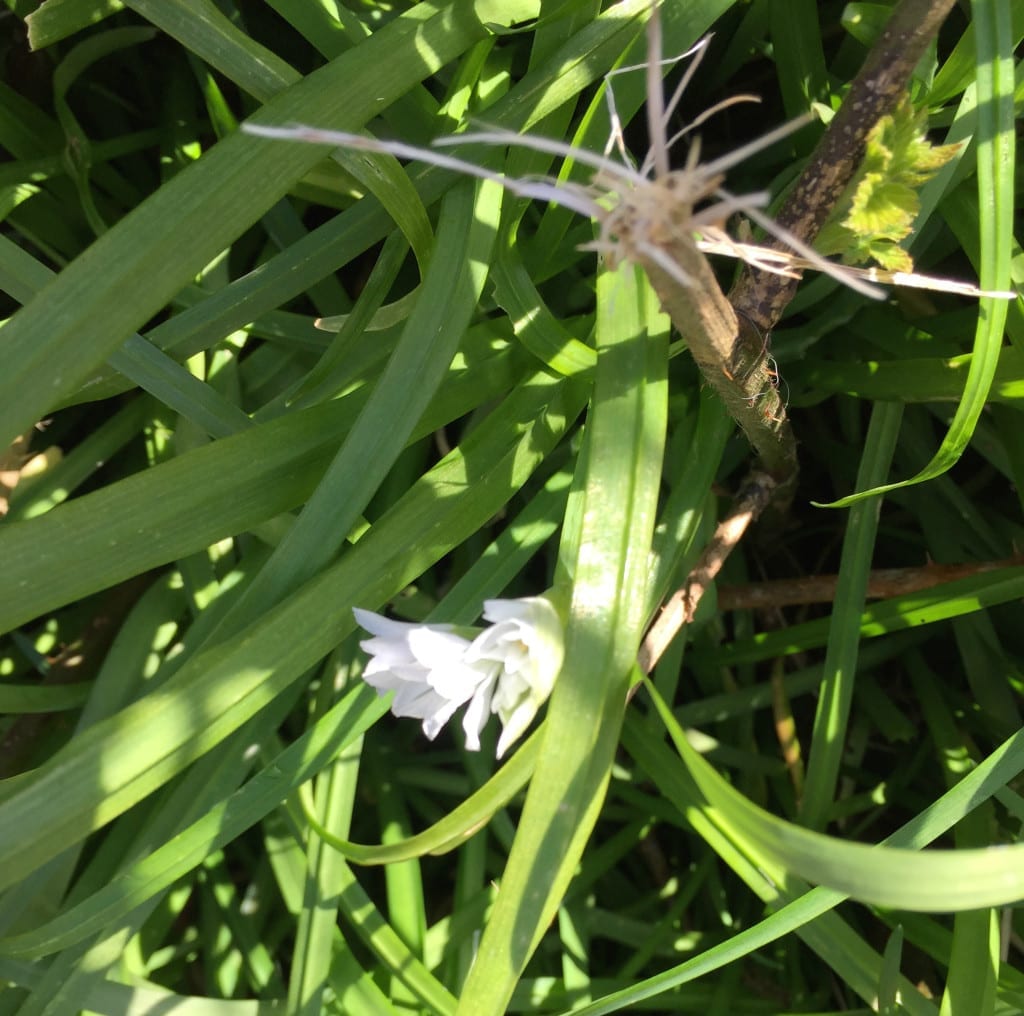Wild garlic or ramsons Allium ursinum always reminds me of the storyline in Hardy’s Tess of the d’Urbervilles, when there was concern that the butter had a funny twang. This was put down to the cows having dined on wild garlic.
The scent of wild garlic may greet you before you spy it, on damp ground and in woods. It often mingles with bluebells and earlier in the season, fading snowdrops.
On South Uist, in the Western Isles, I can pick the non native, invasive three cornered leeks Allium triquetrum but alas, not ramsons. On the Scottish mainland, the ramson flowers are just appearing, so I suspect that the white umbrella - like flowers are already in full bloom in the South of England.

Three cornered leek. Picture: FB
I interchange three cornered leeks with wild garlic in recipes but they are not the same plant. The leaves of three cornered leeks are narrow and the flowers white with a green line.
In some parts of Britain, East Lothian for sure, you may find Few Flowered Leeks Allium paradoxum, or Asian wild onion. This is similar to three cornered leeks but as its name suggests it has fewer flowers and a lighter green stripe.
It, like three cornered leeks, is a non-native and an invasive pest. Cooking with these plants (and on this occasion tugging up the roots too) is helpful. The plants form a thick carpet and compete with native plants like the primrose.
Rosy garlic, another invasive plant, which is common in the South West of England has pink flowers. In England and Wales, it is an offence to plant Allium paradoxum in the wild – so, if you see it, it is definitely worth foraging.
Add wild garlic (invasive or native) leaves to your favourite pesto recipe - replacing the basil and garlic. The resulting pesto will be a vibrant emerald green and very garlicky. I add finely chopped fresh dulse for colour (red) and texture but that’s because I live by the seaside and I add seaweed to lots of my recipes as it is so wonderfully versatile.
One autumn I’m hoping to find the hazel trees that a local crofter tells me he foraged hazelnuts from as a child; this would ensure Hebridean pesto provenance, but this year, I used almonds simply because they were in the store cupboard. A forager learns to improvise and be happy if his or her basket is only half full of ramsons or the invasives.
This recipe which uses the broader leaves of ramsons is taken from the My Wild Kitchen chapter of my book Let Your Kids Go Wild Outside – which was published this week by Cico Books.
What to find:
• 25g easy cook couscous
• 50ml boiling water
• 1 Large carrot
• 2tsps seeds
• 1 tbsp of hummus
• 30 garlic leaves, washed
• Extra wild garlic leaves, chives or cocktail sticks
Method:
1 Prepare the couscous following the instruction on the packet. Put the couscous in a mixing bowl and carefully pour in the boiling water. Cover the bowl with a plate and wait for about 5 minutes until the couscous has absorbed the water.
2 Peel the carrot and grate about a tablespoon (you won’t need all of the carrot).
3 Add the grated carrot, seeds and hummus to the couscous and mix the ingredients together with a fork.
4 Lay two garlic leaves flat, one on top of the other. Place a heaped teaspoon of the mixture on the top leaf at the end closest to you. Leave the edges clear of mixture.
5 Very gently roll up the leaf to make a parcel.
6 Secure the parcel by pushing a cocktail stick through the centre or if you like doing fiddly things, tie your parcel up with strips of wild garlic or chives.
• Fiona Bird is the author of Kids’ Kitchen (Barefoot Books 2009), The Forager’s Kitchen (Cico Books 2013) and Seaweed in the Kitchen (Prospect Books 2015). Her latest book is Let Your Kids Go Wild Outside: Creative Ways to Help Children Discover Nature and Enjoy the Great Outdoors.
